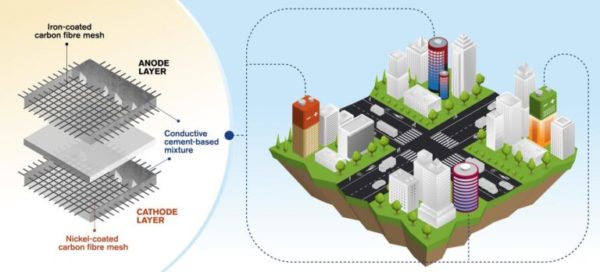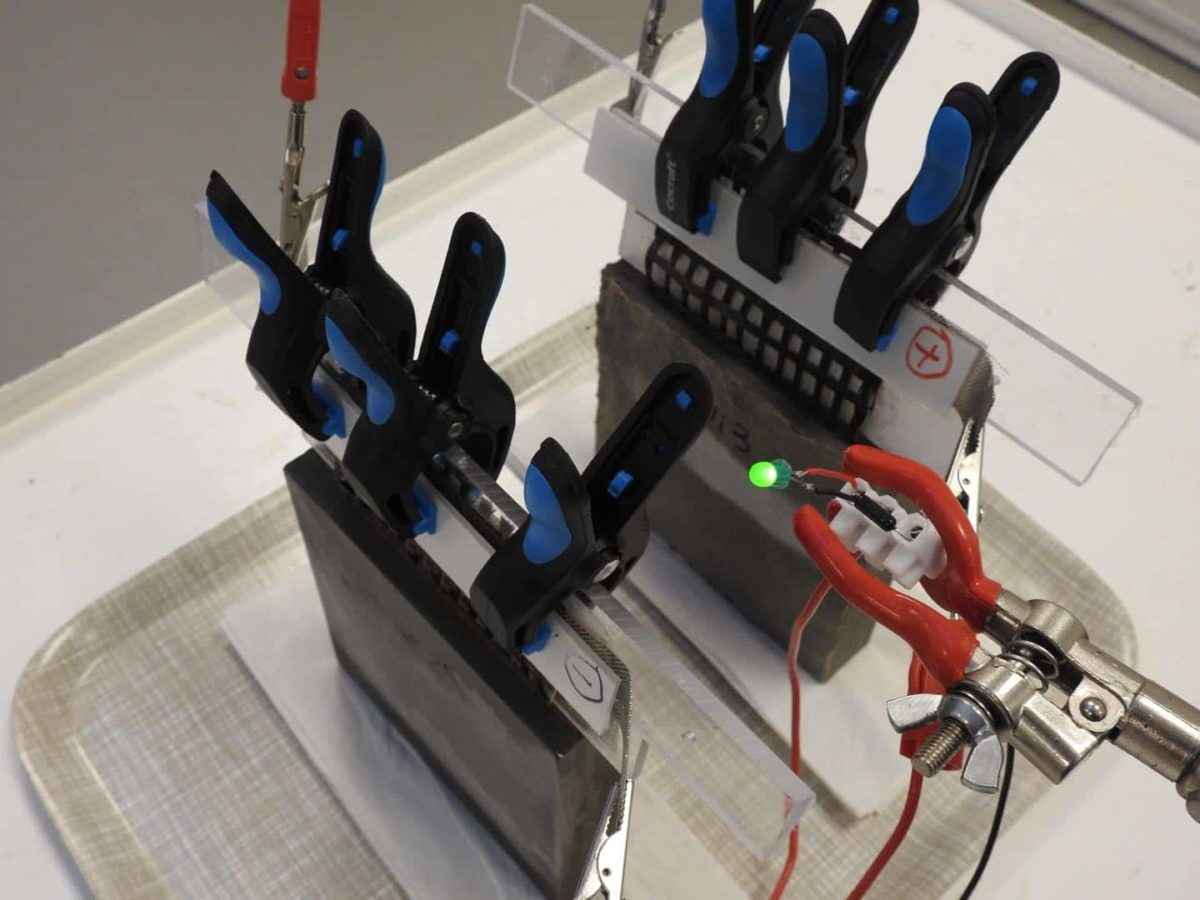From pv magazine International
Scientists at the Chalmers University of Technology in Sweden have developed a prototype of a rechargeable battery based on cement with an average energy density of 7 Wh/m2.
Although the new storage technology is described as being at a very early stage of development, its creators are convinced that the device has the technical potential to be utilized in multiple applications. “This technology is perfectly suitable for large-scale storage of wind and solar energy,” researcher Luping Tan told pv magazine. “It is also perfect for rooftop PV and our primary idea was to produce roof elements with battery functions for storage of energy from PV.”
The storage system consists of a cement-based mixture in which a commercially available metal-coated carbon fiber (CF) mesh was embedded. Iron (Fe) was used for the anode and nickel-based (Ni) oxides for the cathode. “When CFs are used as additional filler in cement-based materials, they can increase electrical conductivity, decrease drying shrinkage, and increase flexural toughness,” the researchers explained.
The spacing of the meshes was 10 mm by 8 mm with a thickness of 1 mm and an ion exchange resin was added to the mixture of the cement-based electrolyte separator. “The structural battery was constructed as an anode layer, a separator layer, and a cathode layer, where the electrolyte is the cement-based separator,” the Swedish group said.

Image: Chalmers University
In the testing phase, the academics used a commercial charger for rechargeable nickel-cadmium (Ni-Cd) batteries. The charging periods were approximately 12–16 h and the discharging periods around 8–12 h. “The cement-based electrodes with iron powder and nickel hydroxide (Ni (OH)2) powder are rechargeable in liquid electrolytes and can make a small LED lamp shine for several hours,” they stated. adding that its energy density reached just 0.5 Wh/m2.
The same electrodes with a coating of metal Ni and Fe, respectively, reached a maximum energy density of 7 Wh/m2 during six charge/discharge cycles. “The energy density is still low in comparison to commercial batteries, but this limitation could be overcome thanks to the huge volume at which the battery could be constructed when used in buildings,” the scientists said. “We have a vision that in the future this technology could allow for whole sections of multi-storey buildings made of functional concrete.”
A cost assessment of the storage technology was not conducted yet. “At the present stage it is difficult to compare the costs between different approaches,” Tan explained.
The experimental battery was described in the paper Rechargeable Concrete Battery, recently published in the scientific journal Buildings
This content is protected by copyright and may not be reused. If you want to cooperate with us and would like to reuse some of our content, please contact: editors@pv-magazine.com.









Here we go again….. using a Pollution based product …. Cement.. ( till they can figure out how to make pollution free Cement .. …. remember conversion of CaCO3 to CaO… REQUIRE RELEASE OF CO2… a GREENHOUSE/POLLUTION CAUSING GAS…).. for Energy Storage…. BAD IDEA… VERY VERY VERY BAD…!!!!
Remember in a ZERO POLLUTION FUTURE one will require about a 30TW/40,000TWhrs/yr Energy Storage System…